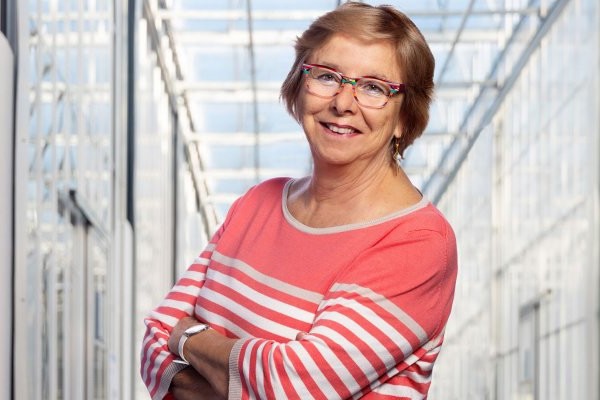Creating optimal conditions for plants and the environment and thus developing a highly efficient greenhouse using green energy - that is the legacy of Cecilia Stanghellini and her colleagues. After 40 years of greenhouse research, Stanghellini is retiring as a research associate. She sees plenty of opportunities for further sustainability improvements in greenhouse cultivation.
'I never thought I would spend 40 years doing research at WUR,' says horticultural expert Cecilia Stanghellini at her leaving event. She grew up in Italy, studied physics and decided to learn more about the technical side of greenhouse horticulture. After her PhD graduation, she was able to stay on at Wageningen Plant Research. Stanghellini settled permanently in the Netherlands, from where she regularly travelled to other parts of the world, teaching and working as a visiting researcher.

During all these years, Cecilia Stanghellini approached her work like a Formula 1 mechanic, the person tasked with maximising the performance of a car to ensure that the driver gets the best result too. Stanghellini does something similar for greenhouse horticulture. She is fascinated by understanding the technical system in a greenhouse and improving it based on her knowledge of physics. 'A greenhouse is not just about the plants, but also the technology. That's the strength of greenhouse horticulture.'
The technical system in a greenhouse largely determines the conditions in which crops grow. Light, temperature, moisture and CO2 levels are closely related and influence the yield. 'It's about controlling all those circumstances.' Which is why she has contributed to the development of digital tools for researchers and growers.
Greenhouses much more efficient now
When Stanghellini started in the 1980s, energy was expensive and greenhouses used much more energy than they do today. That has steadily changed: 'Greenhouse horticulture has become much more efficient but not nearly efficient enough.' Energy savings eventually stagnated due to the general lack of financial incentive for horticulturalists. 'Gas was too cheap.' Now Stanghellini is increasingly hearing calls for sustainable greenhouses. 'We need to move away from using gas and finally become climate neutral.'
The desire to achieve sustainability led to the design of the most sustainable greenhouse in the Netherlands: KAS2030. This demo greenhouse with strawberries and flowers is at the WUR site in Bleiswijk and is powered by green electricity instead of gas. For dehumidification, the greenhouse has a heat pump. This recovers and stores heat for use at night and in the winter. An additional advantage is that the greenhouse remains more closed in summer and spring. Every drop of used water goes back into the system and crop protection is achieved using natural enemies wherever possible. Stanghellini: 'The first results are hopeful. Sustainable greenhouse horticulture is definitely possible.'
'Cleaner means - unfairly - more expensive'
However, Stanghellini is keen to emphasise: change is slow. 'Only a few growers work in a way that even comes close to KAS2030,' she says. 'It is possible to work more sustainably, but understandably this is not yet the case. That's because of the low prices of our food. Growers just can't afford it.'
'Cleaner might seem to mean more expensive, but that's not the case because the environmental impact is not yet factored into food prices.' According to other researchers, we would then need to spend an extra 86 cents for every euro. 'We don't pay those costs now, although we do need to pay the higher production costs for sustainable crops. The entire food system needs to adapt and consumers must also be willing to pay more.'
To work for change from within, Stanghellini spent a lot of time teaching. In the lecture hall and greenhouse, she was not only joined by students, but also by growers and suppliers. In each case, she explained to them how a greenhouse works and the physics behind it. In 2019, she and two colleagues compiled all their knowledge about physics, botany and technology into a textbook for greenhouse horticulture. Not telling you how to do it, but explaining how it works, is her motto. According to Stanghellini, this helps people make more sustainable choices. 'Growers need to understand how it works and then decide what is best in their situation,' she concludes.
Source: wur.nl
